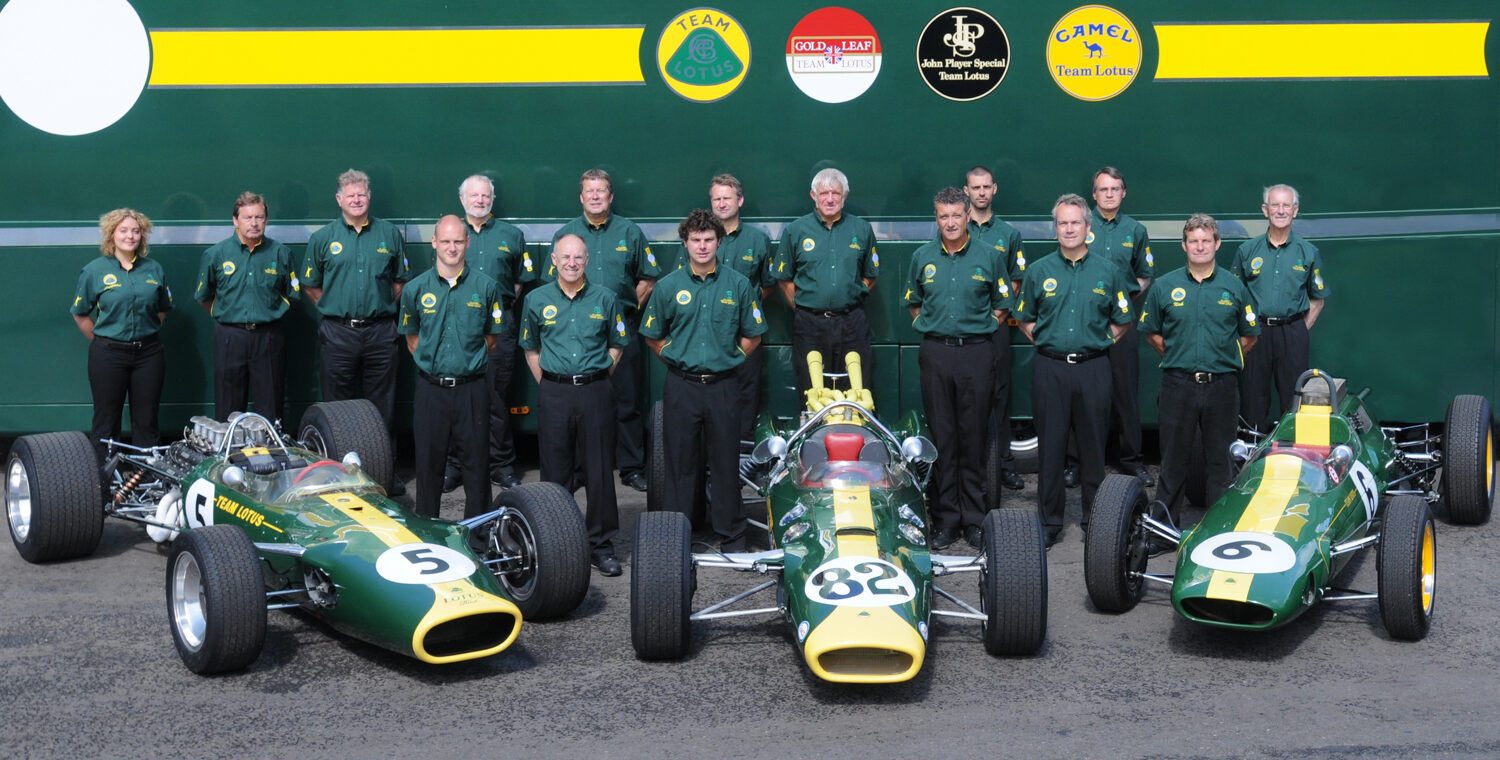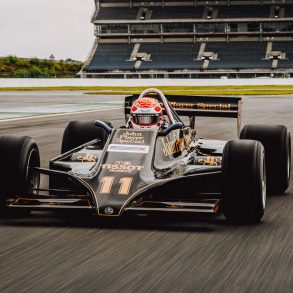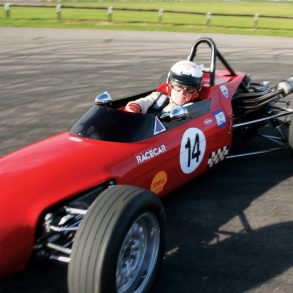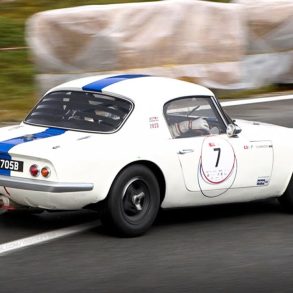It’s amazing the things you can find when you’re not looking. Such was the case a year ago, when I spent a month in England promoting VRJ. One of the highlights of my visit was an excursion to Hethel in East Anglia with our European Editor Ed McDonough to visit the operations of Classic Team Lotus. Our plan was to interview its founder and guiding force, Clive Chapman. Who would have known that we would have stumbled across one of the most interesting and virtually unknown racecars ever built by Clive’s father, Colin Chapman.
Ed’s and my adventure in Lotus history’s “Lost & Found” began with the challenge of getting to Classic Team Lotus. Located in the rolling countryside outside of Norwich, the Lotus industrial complex is hidden away by a bewildering collection of single-lane country roads. Clive usually sends visitors two sets of directions: the fast way and the easy way. I’m not sure which we got!
Once we located the complex, we were directed to a corner of old shop space located off to the side of the Lotus car company’s grounds. As we walked inside the Classic Team Lotus shop we were greeted by Clive and several members of his restoration staff (many of who were original mechanics from “the old days”). The main shop space is very small for an organization that maintains and restores Lotus Formula One cars, as well as the Chapman family collection. The two small service bays were really only large enough for three or four cars at the most. But as Clive pointed around the room, he explained that this was the original facility used by Team Lotus in the early days. The shop may have been small, but it positively reeked with history.
Next, Clive walked us into the back “storeroom.” As Ed and I stepped into the large, dark room, I quickly realized how Howard Carter must have felt as he stepped into Tutankhamen’s tomb for the very first time. The room was literally filled with treasures from racing’s past: body parts from Andretti’s championship-winning Type 79; drawer upon drawer of original drawings and engineering designs for every open-wheeled Lotus racecar ever produced; and even a collection of Ayrton Senna steering wheels, gloves and race suits. We had stumbled across the Mother Lode of racing artifacts.

After grudgingly returning to the main shop area, Ed, Clive and myself stood around and chatted about the history of the shop space as we looked over several ’70s and ’80s era F1 cars. I spotted a car tucked away in a corner and asked Clive, “What’s that one over in the corner?”
Clive folded his arms, paused a moment and responded, “Well… err… that’s something of a ‘special project.’”
However, sensing that the dumb Yank probably wouldn’t leave without an answer, he went on to explain that the car was the prototype 57/58 built for Clark to develop as both an F2 and F1 car, until his tragic Hockenheim accident mothballed the project. Ed recalled hearing about the car and became immediately excited and took up the line of questioning. Clive went on to explain the technical and historical significance of the car, followed by a sincere request that we not make mention of the car until the restoration was completed. Like archaeologists sworn to secrecy after discovering Atlantis, we reluctantly agreed.
Fast forward now to the end of May 2000. We are just putting the finishing touches on the July issue when I get a call from Ed.
“Do you remember the Type 58 that we saw at Classic Team Lotus last summer?” he asks.
“Sure,” I say.
“Well, I’ve just been to the unveiling and Clive graciously gave me a chance to be the only nonteam driver to try the car.”
“You bastard!” I responded.
After I regained my composure, I got to utter the most hallowed line in all of publishing, “Stop the Presses!!”
Having the opportunity to feature a world exclusive on a Lotus F1/F2 that most experts had no idea ever existed was just too good an opportunity to sit on (after all, we’d somehow managed to keep silent for over a year).
So it’s with great pleasure that we present to you “Lost Lotus” the very first account of this extremely unique racecar, which might very well have changed the direction of racing history had not a leaky tire at Hockenheim forced it into a back room at Lotus. Though Ed and I may have gotten lost on our way to Hethel, we sure made one hell of a find when we got there.










